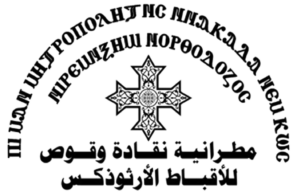How Universities are Using Education Chatbots to Enhance the System
Besides, a chatbot for education acts as a virtual assistant to help teachers and students perform various tasks with ease. These bots engage students in real-time conversations to support their learning process. They can simulate a classroom experience, delivering personalized learning content, and adapting to individual student needs.
With the use of these AI chatbots, Podar Education Network has significantly reduced the load on administrative staff and enhanced communication within the educational community. Let’s look at how Georgia State uses higher education chatbots to personalize student communication at scale. Pounce was designed to help students by sending timely reminders and relevant information about enrollment tasks, collecting key survey data, and instantly resolving student inquiries on around the clock. Virtual tutoring and personalised engagement help smoothen and enhance the overall learning experience. Chatbots are trained in natural language processing (NLP) which allows them to easily analyze and evaluate the answers given by students. This also helps students receive personalised help and feedback according to their individual progress.
Playschool & Daycare Admissions Chatbot
Whether we realise it or not, artificial intelligence (AI) now plays a major role in our everyday lives. From the rise of voice commands like Siri to creating ‘smart homes’ with Google Home or Alexa, AI is working behind the scenes to save us time and help streamline our daily tasks. Finding the right university can be tough, especially if it is in a different country. That is why MeetUniversity created this bot to match Indian students with the perfect foreign university for them. With Acquire, the chatbot also allows you to personalize your message to each student while sending mass notifications. With Social Intents, you can build your custom AI chatbot in minutes without any coding experience or technical skills.
If you offer educational courses, you should definitely get started with this free chatbot template. Being in an educational sector you must be facing issue like capturing lead data, availability around the clock, and engaging customer service. Don’t worry, this chatbot help educational brands to establish meaningful touchpoints of engagement to connect with a broader potential audience. As we discussed, chatbots take many forms, and AI assistants have human soft skills so they can serve as students’ personal learning companions.
Accessibility On Messaging Channels
Join us for a session with MyOperator & LeadSquared on how to maximise student conversions for your educational institute. She has been a part of the content and product marketing game for almost 3 years. In her free time, she loves reading books and spending time with her dog-ter and her fur-friends. Chatbots can also be used to send reminders for book returns or overdue items, renew library materials, and suggest study guides or research methodologies. Predicted to experience substantial growth of approximately $9 billion by 2029, the Edtech industry demonstrates numerous practical applications that highlight the capabilities of AI and ML.
This can assist schools in gathering important data and addressing issues that lead to subpar outcomes. A robust student assistance strategy is required for educational institutions in light of this expansion. Prioritize and respond quickly to student inquiries before registration, during the course, and after that. With educational chatbots, education institutions can support students to diversify their knowledge and learn around the clock. Studies have shown that chatbots like ChatGPT can have a significant impact on learning outcomes. By providing personalized support and guidance to students, chatbots can help to improve academic performance and reduce the number of students who drop out of school.
Higher & Professional Learning Chatbot
GPT-4 outperforms existing large language models (LLMs) on a collection of NLP tasks and exceeds most reported state-of-the-art systems. They found they enabled open-domain conversational capabilities, including generalizing scenarios not seen in training and reducing knowledge hallucination in advanced chatbots. Equally, Bang et al. (2023) find that ChatGPT has 63.41% accuracy on average in 10 different reasoning categories under logical reasoning, non-textual reasoning, and commonsense reasoning, which makes it an unreliable reasoner. For example, Bastiansen et al. (2022) deployed the Stereotype Content Model to research the effects of warmth and gender of a chatbot on stereotypes, trustworthiness, aid, and capability.
Tegos et al. (2015) analyzed the effects of chatbots in collaborative learning experiences among college students, finding that tech increases various knowledge acquisition measures. While chatbots serve as valuable educational tools, they cannot replace teachers entirely. Instead, they complement educators by automating administrative tasks, providing instant support, and offering personalized learning experiences. Teachers’ expertise and human touch are indispensable for fostering critical thinking, emotional intelligence, and meaningful connections with students. Chatbots for education work collaboratively with teachers, optimizing the online learning process and creating an enriched educational ecosystem.
If you want to meet the expectations of these young students, incorporating automated student support services is the key. You can deploy bots to answer the most common questions the new batch of students ask every year. They can provide information about the university campus, facilities, scholarships and benefits, and enrollment process. With well-designed conversation flows, chatbots can guide students towards their interests.
Read more about https://www.metadialog.com/ here.
